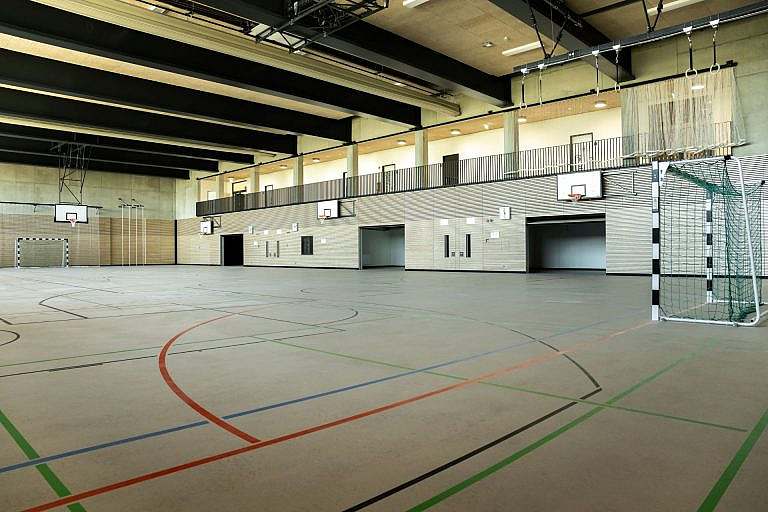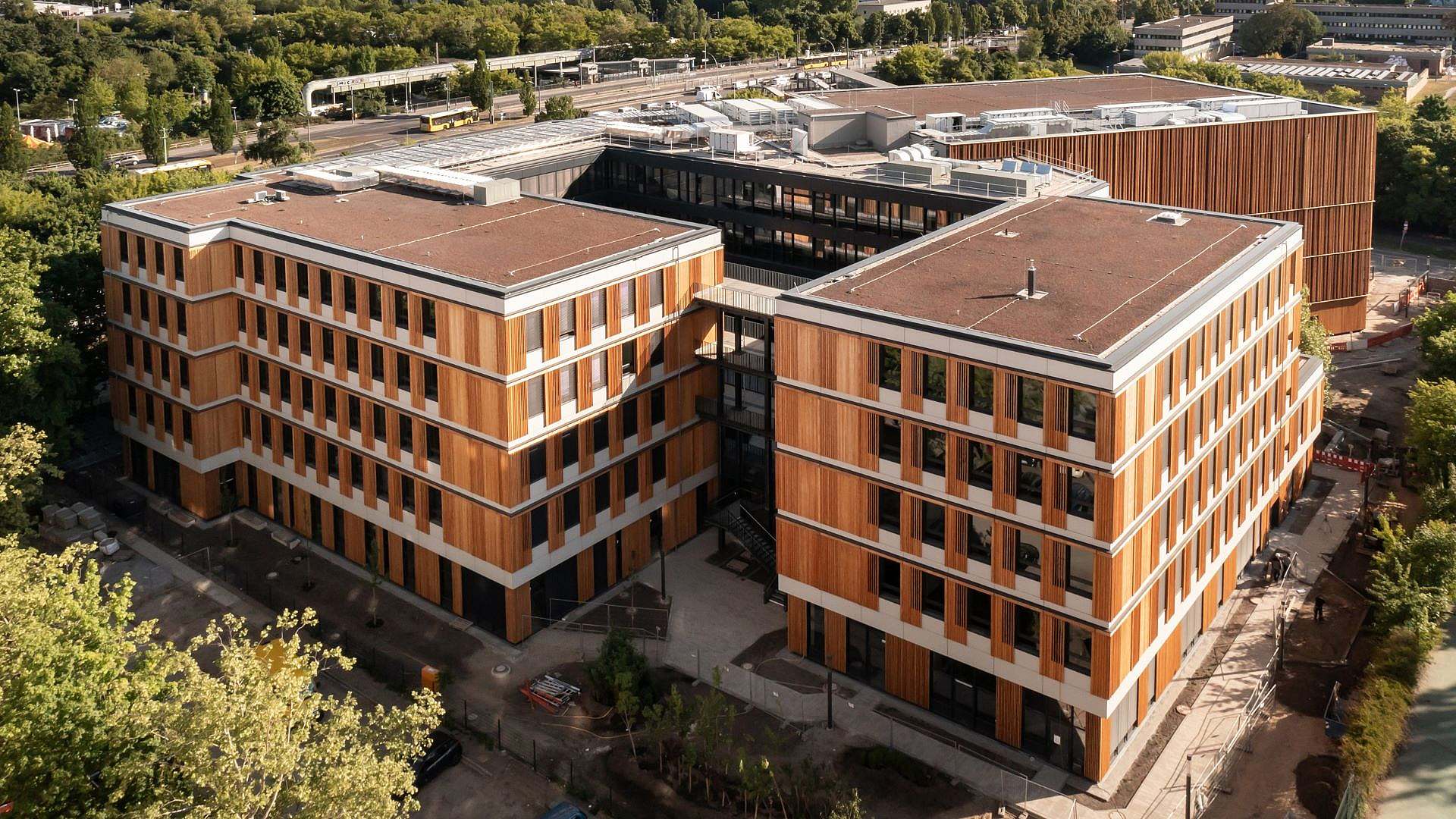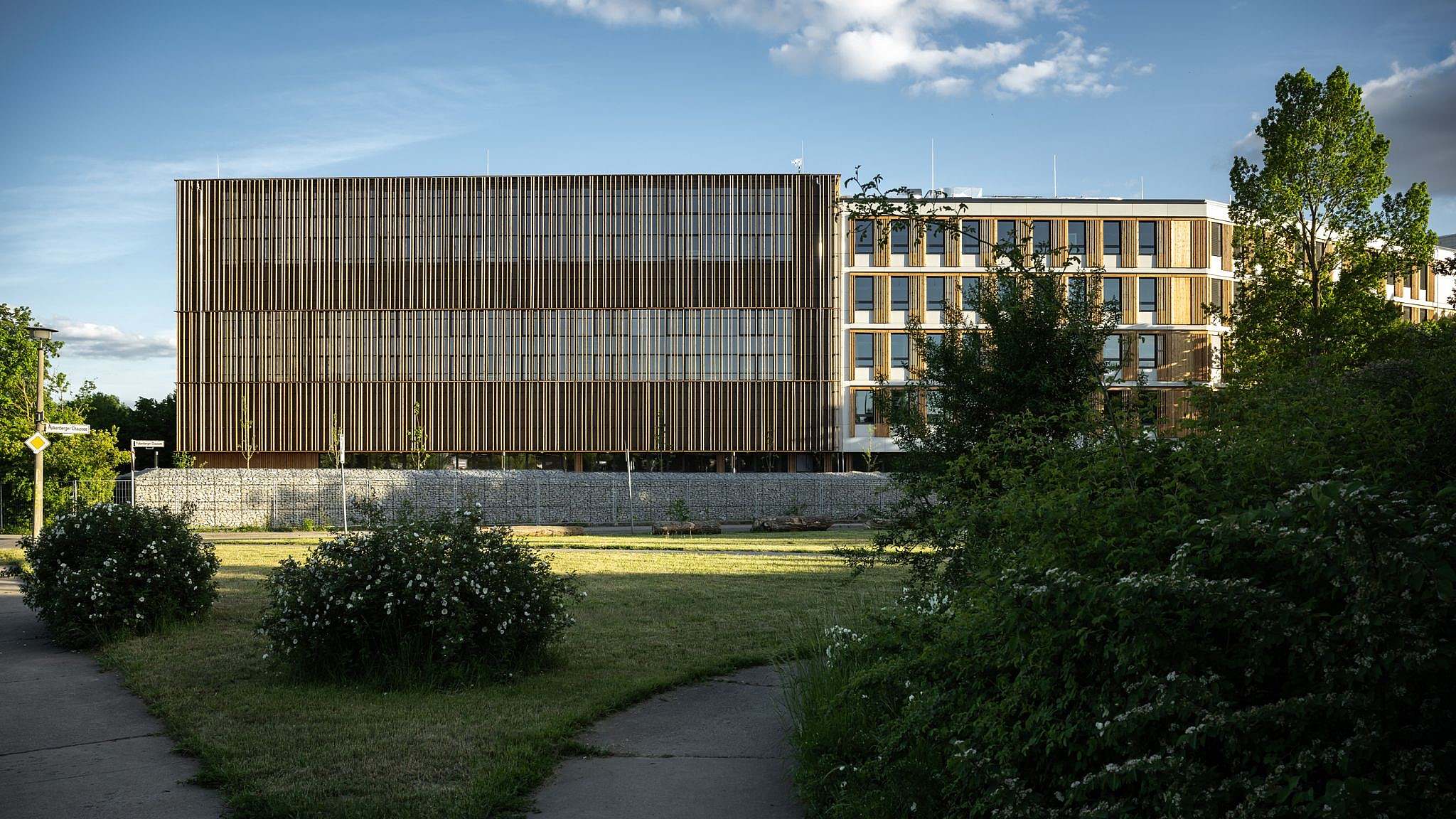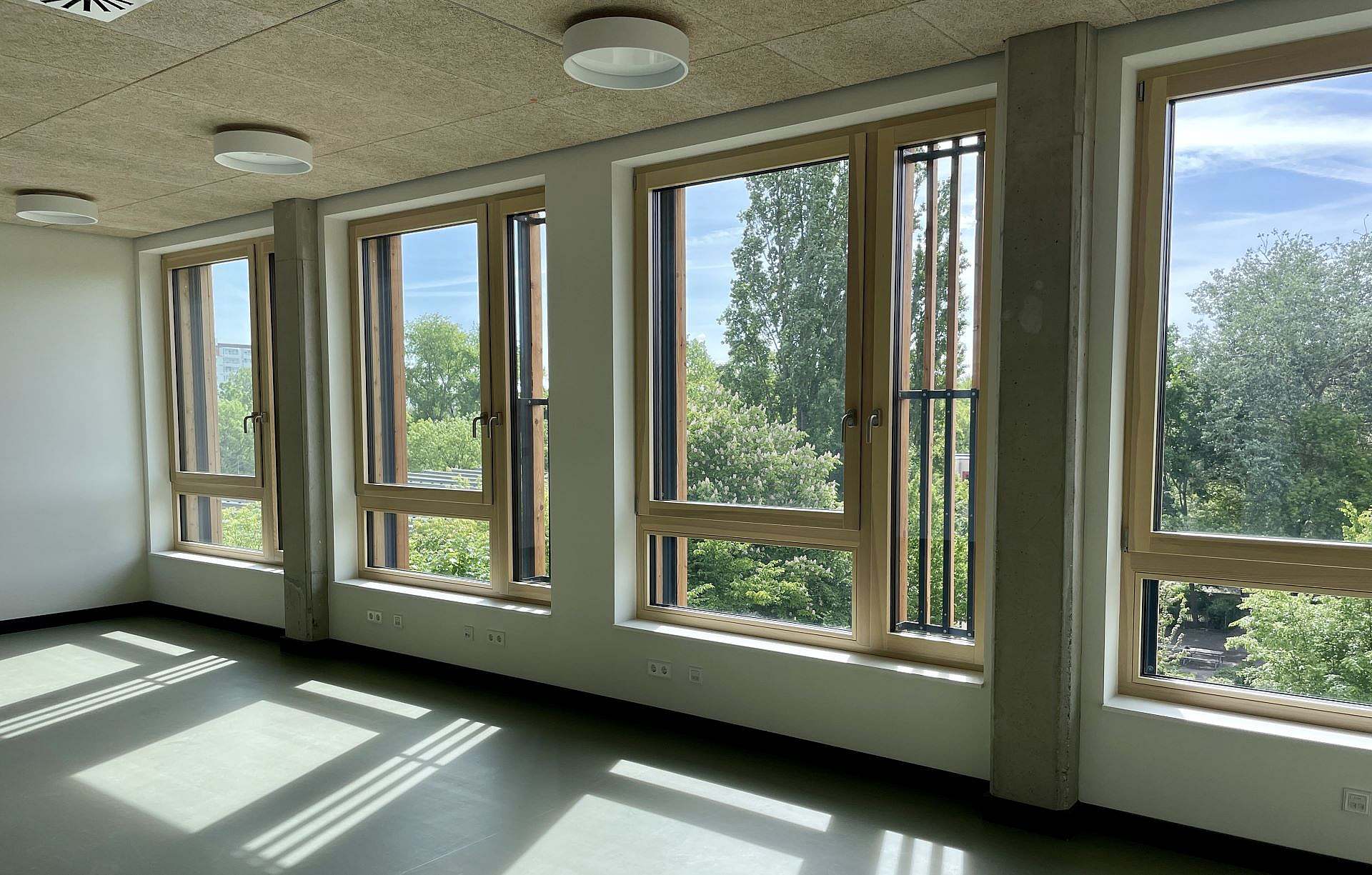Skolen am Breiten Luch is the result of an architectural competition to design an integrated school for 725 students in the Lichtenberg neighbourhood of Berlin. The school is designed according to a compartment principle with small school units within the school. Two sports halls are also integrated on a relatively small plot of land, which is subject to heavy noise pollution from both a major road and a railway track. In addition, there is a water pipe across the site that must be kept clear of construction, which has required a different way of organising the construction.
Berlin
Germany
HOWOGE
2025
19 875 ㎡
1st place in architectural competition
Renner Architekten GmbH, ifb frohloff staff kühl ecker, B4-PLAN Ingenieurgesellschaft mbH, Bode - Williams + Partner Landschaftsarchitekten
Design, authorisation, project planning and supervision


The school's north-facing sports hall with a latticed wooden facade is the urban highlight visible from afar
The semi-transparent façade gives a sense of life to the hall, and in the evening the interplay between the structure and the artificial light creates an innovative and exciting façade image.
The school's clear and distinct interior concept means that it is easy to find your way around the building. Large amounts of incoming daylight create exciting visual connections inside and outside the building. The cantilevered structure creates a clear entry point for students, and a line of sight through the building's interior street makes it easy to orientate yourself no matter where you are coming from.

"Our two sports halls are located above each other and raised to the first floor. They are oriented towards Falkenberger Chaussee, so the halls form a noise barrier from the surrounding road and railway.
In this way, the sports halls create a landmark facing the city and become a natural entrance to one of the district's major parks and learning areas. "
Mikkel Beedholm, Architect and Partner, KHR Architecture
Contact

A meeting place for the neighbourhood even after school
The ambition of the Skolen Am Breiten Luch is not only to create a modern school that matches the Berlin school concept, but also to uplift a challenged neighbourhood with a distinctive building where sports halls and common areas on the ground floor can be used by associations and area residents after school hours.
KHR, with its extensive experience in modern school building designed a school that makes the best possible use of the site, while providing an optimal framework for the cluster concept.

The architectural grip
The entrances and actively designed courtyard areas face north, while the more noise-sensitive exterior areas and classrooms face the area's quieter and greener south. The classrooms can be extended with an adjoining anteroom, allowing for flexible furnishing and a private balcony.
The common team areas are arranged so that students can retreat to immerse themselves while still maintaining visual contact with the classroom.
All uses are grouped around a central courtyard with plenty of natural light. The administration and science rooms are located on the first floor.
On the ground floor are the partially public areas, which can be used by students as well as associations and other institutions in the area. The cafeteria and multipurpose area are located under the sports hall, providing space for events of all kinds, both for the school and the local community.
The entrance interlocks with the internal link and the terrace area south of the cafeteria to create a large continuous "eventscape" that welcomes students and other school users. The quieter area on the ground floor houses the art and work room, teaching kitchen, library and therapy area. These functions are also used by people outside the school and are accessible from the outside.

Wayfinding in the house
As part of the project, we have developed a wayfinding and signage conceptthat supports orientation for both daily users and visitors. The solution includes overview signs, direct printing on surfaces and smaller, transparent signs like the example shown. The signs contribute to both clarity about where you are now and an overview of the relationship to the rest of the building.


